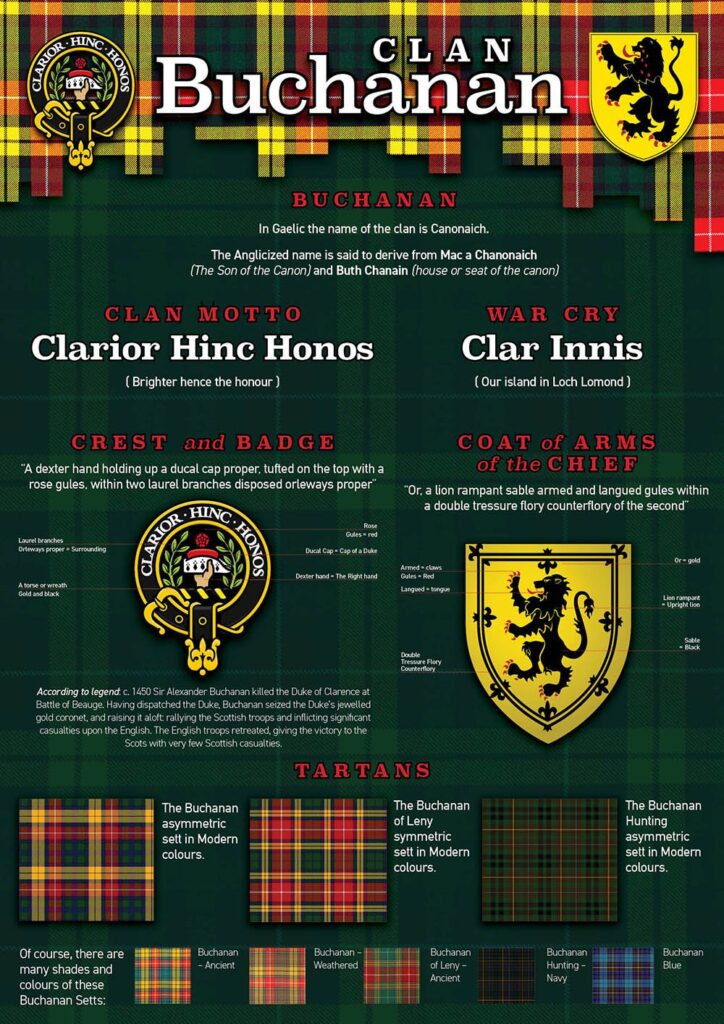
Torchlight Procession and Calling of the Clans will take place at 7pm on Saturday October 11, 2025. IF your clan has not set up a Convener Tent you are very welcome to represent them in the procession. Come to Clan Row Beginning at 6.30pm
The clan system which arose in Scotland around the 11th century was a complex society. The clan family was headed by a Chief. While many of the clansmen were blood relations others might be tenants of the clan lands. The clan also included those who married into the clan as well as other unrelated individuals and smaller families or clans (septs) who joined the larger clan for protection and support. A “sept” moved into a region or moved out of a region and changed allegiances. As a result some “septs” are allied with more than one clan family. The clan system was based on the economics of the times and functioned, for better or worse, much like a family business.
Today anyone who has the chief’s surname is automatically considered to be a member of the chief’s clan. Also anyone who offers allegiance to a chief becomes a member of the chief’s clan unless the chief decides not to accept that person’s allegiance.
The word clan is from the Gaelic word “clanna” meaning “children.” Originally each clan was made up of the descendants of one man and his children. The clan names which are in use today have come down from the founders of the royal dynasties of the Picts, the Scots and the Vikings in the Highlands as well as the noble families of the Britons, Flemish, Normans, Angles, and Saxons in the Lowlands and Borders.
Almost all Scottish clans have more than one tartan attributed to their surname. Although there are no rules on who can or cannot wear a particular tartan, and it is possible for anyone to create a tartan and name it almost any name they wish, the only person with the authority to make a clan’s tartan “official” is the chief. In some cases, following such recognition from the clan chief, the clan tartan is recorded and registered by the Lord Lyon. Once approved by the Lord Lyon, after recommendation by the Advisory Committee on Tartan, the clan tartan is then recorded in the Lyon Court Books. In at least one instance a clan tartan appears in the heraldry of a clan chief and the Lord Lyon considers it to be the “proper” tartan of the clan.
Today clan family societies are generally formed for educational, literary, social, or beneficial purposes, to further friendships and share the heritage of the clan family to collect and preserve its relics and, in the case of some larger societies, to assist in the maintenance and acquisition of former clan territories in Scotland.
The Scots and their descendants are extremely proud of their long and colorful history so while you are attending any festival make it a point to visit the Clan area. You will have no problem finding them. Look for brightly colored flags, tartans and banners flying. You’ll be as welcome as you can be and you will find many gracious and interested folks who will be more than happy to help you with any questions you might have.
TO REGISTER FOR A FREE CLAN CONVENER BOOTH CLICK HERE WE HAVE SPACE AND WILL ACCEPT REGISTRATIONS UNTIL WED OCT 8th.
HONORED CLAN 2025
CLAN BUCHANAN


Clan Conveners for 2025
(Listed in order of registration)
Clan Douglas Society of North America Jamais Arriere- Never Behind

Clan MacLeod The MacLeod of Harris and Dunvegan branch uses the motto “Hold Fast”. The MacLeod of the Lewes branch uses the motto “I Birn Quhil I Se” (I burn while I shall)

Clan Cochrane Virtute et Labore -By Valor and Exertion

Clan Shaw Fide Et Fortitudine -By fidelity and fortitude
CONVENER & SPONSOR



Society of Scottish Armigers SSA “Clans” don’t have coats of arms or mottos; armigers do. An armiger is an individual with heraldic arms. A clan is a group of people who recognize a specific armiger as their chief and wear his or her crest surrounded by a strap and buckle bearing the chief’s motto or slogan. It’s a bit more complicated than that. The Lord Lyon King of Arms, the supreme judge of heraldry in Scotland, may recognise the chief of a clan or the head of a family by a grant or a confirmation of the principal Arms of the clan or family in question. And for an armiger to be an armiger, their arms must also have been recognized by the Lyon Court and entered in the Public Register of All Arms and Bearings in Scotland, which has been maintained since 1672. Scotland, in fact, has some very precise rules governing arms and heraldic achievements. The Society of Scottish Armigers was founded to help people understand some of these rules and avoid common mistakes.

Clan Mackay. Manu Forti- With a Strong Hand

Clan Campbell Ne obliviscaris– Forget Not

Clan Irwin Association Let Irwin Flourish

Clan Skene Virtutis Regia Merces- A Palace the Reward of Bravery

Clan MacKenzie – LUCEO NON URO -I Shine, Not Burn

CLAN MacLEAN– VIRTUE MINE HONOR
